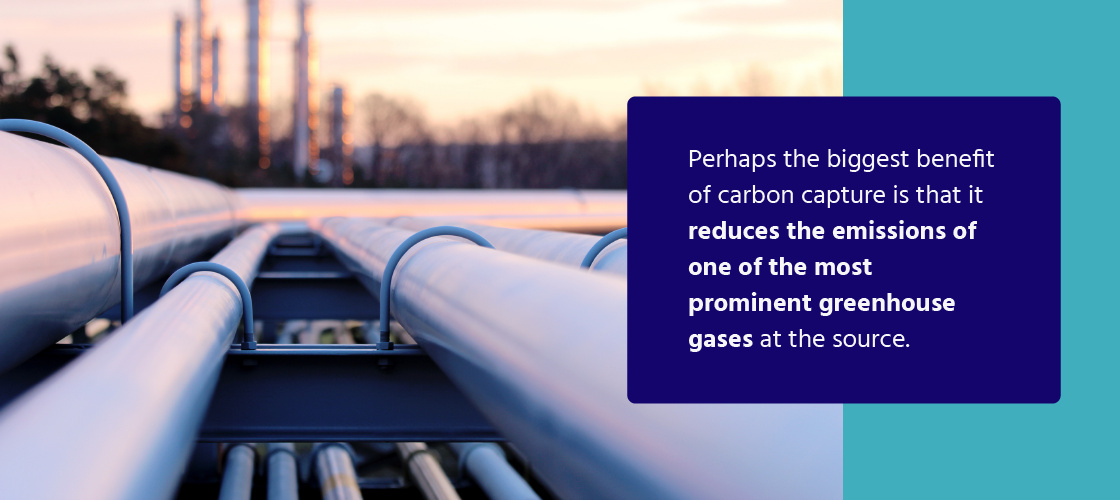

Reducing environmental impact is now an essential part of the future strategy for major energy companies worldwide. Increased resources and investment are being injected into the energy transition as companies turn to more renewable forms of energy. However, it’s widely acknowledged this energy transition will take time. With the world still very much reliant on conventional fossil fuels, one of the critical challenges the industry faces is how to continue operating while finding ways to reduce the level of carbon dioxide emitted. Carbon capture and sequestration (CCS) is one of the leading solutions for these emissions gaining momentum during this industry-wide transition.
Carbon dioxide is one of several greenhouse gases that impact the environment. However, it is considered the worst offender. There is more carbon dioxide in the atmosphere than methane or nitrous oxide, and it is a long-lived gas that absorbs less heat than the other two gases.
It’s estimated that the gas is responsible for two-thirds of the imbalance contributing to the rise in the earth’s temperature. Nevertheless, in many ways, the production of carbon dioxide is unavoidable. And while too much of the gas isn’t good, some of it is necessary. Without the greenhouse effect, the planet would have an average temperature well below freezing.
Carbon capture and storage, or sequestration (CCS), is a process to lower harmful emissions in which producers capture carbon dioxide resulting from activities such as burning fossil fuels and store the gas beneath the earth’s surface. The process is as follows:


Material selection is critical to the success and longevity of any CCS project. A number of factors have led to the consideration of utilizing corrosion-resistant alloy tubulars to adequately withstand the harsh environments present throughout the CCS process.
While there is much discussion about switching from fossil fuels to cleaner-burning, renewable sources of energy, the reality is that many areas of the world will be reliant on fossil fuels for many years to come. Carbon capture will therefore play a vital role in the transition by helping companies reduce their carbon footprint while also creating the opportunity for future commercial use. Perhaps the most significant benefit of carbon capture is that it reduces the emissions of one of the most prominent greenhouse gases at the source, preventing carbon dioxide from getting into the atmosphere in the first place and helping to reduce the greenhouse effect.
However, for CCS to truly offer a long-term solution to energy companies aiming to reduce the impact of non-renewables, material consideration is vital. If you need assistance with alloy selection on your next CCS project, Corrosion Resistant Alloys can evaluate your well conditions to help you choose the right product for your application. Contact our expert metallurgy team to get started!
"*" indicates required fields